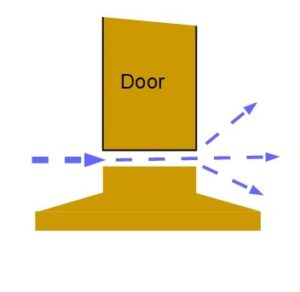Insulation Basics – Ventilation
A significant factor in the comfort of you house is the ‘Ventilation Rate’ .
.
No one likes cold draughts in winter.. . . and hot air creeping in during summer can be equally unwelcoming.
So how do you calculate heat losses due to ventilation?
Well it starts by deciding how many air changes per hour (ac/hr) you have.
That is how often is the air in the areas you want to heat, or cool, replaced.
Typical ventilation rates
Its hard to measure the actual changes without specialist equipment however here are some typical values:
-
- Old weatherboard property – More than 2ac/hr
- Typical new house – Around 1 ac/hr
- Well draft sealed house – 0.5ac/hr
Calculations
To calculate the ventilation heat loss the following formula is used:
Qv = 0.36 x V x N
Qv – Ventilation heat loss in in W/degree C
V – Volume in cubic m of space being heated or cooled
N – Number of air changes per hour
So for a typical house with a floor area of 250m2 with 2.3m ceilings:
Qv = 0.36 x (250 x 2.3) x 1 = 207W/degrees C
To keep this house at 20 degrees with an outside temperature of 10 degrees would need 207 x 10 watts = 2.07kw/hour…… just for ventilation losses
A well draft sealed house will reduce the heating required to 1.04kw/hour. (You would be saving $1 every five hours, with more saving on colder nights)
WARNING
If you have got a flue less heater (such as portable gas heaters, kerosene heaters or bio ethanol heaters) you do need some ventilation to keep a safe level of oxygen in the room.
See Insulation for similar Posts
For Posts about Green Building see Sustainability